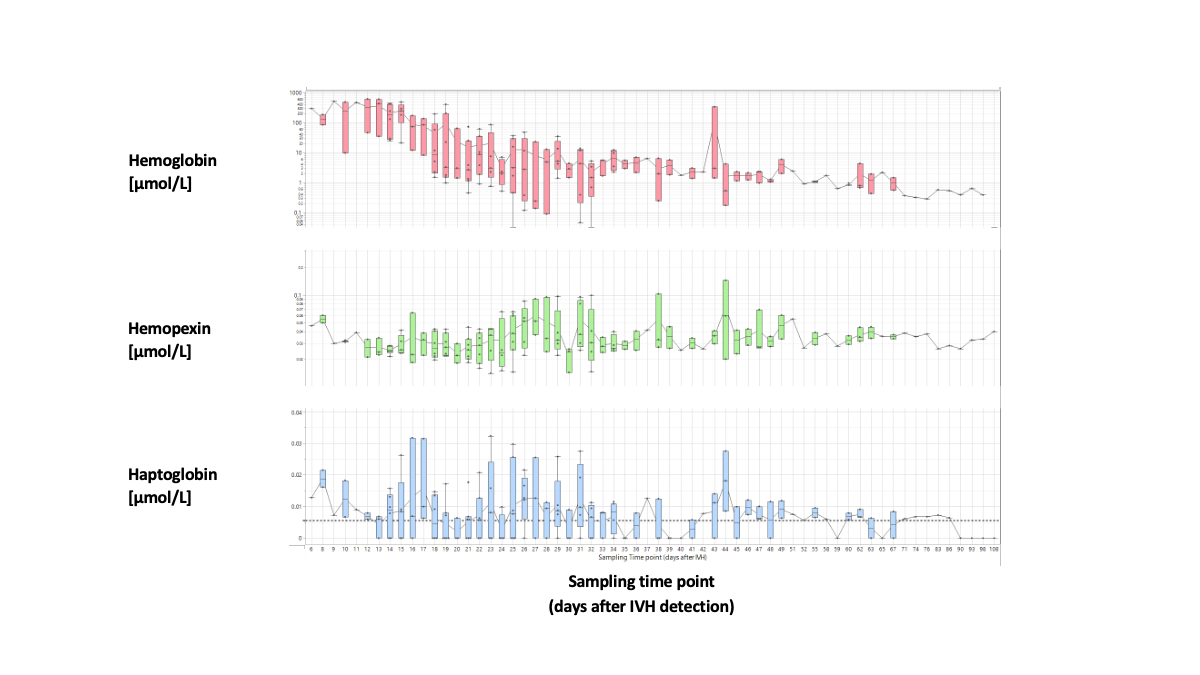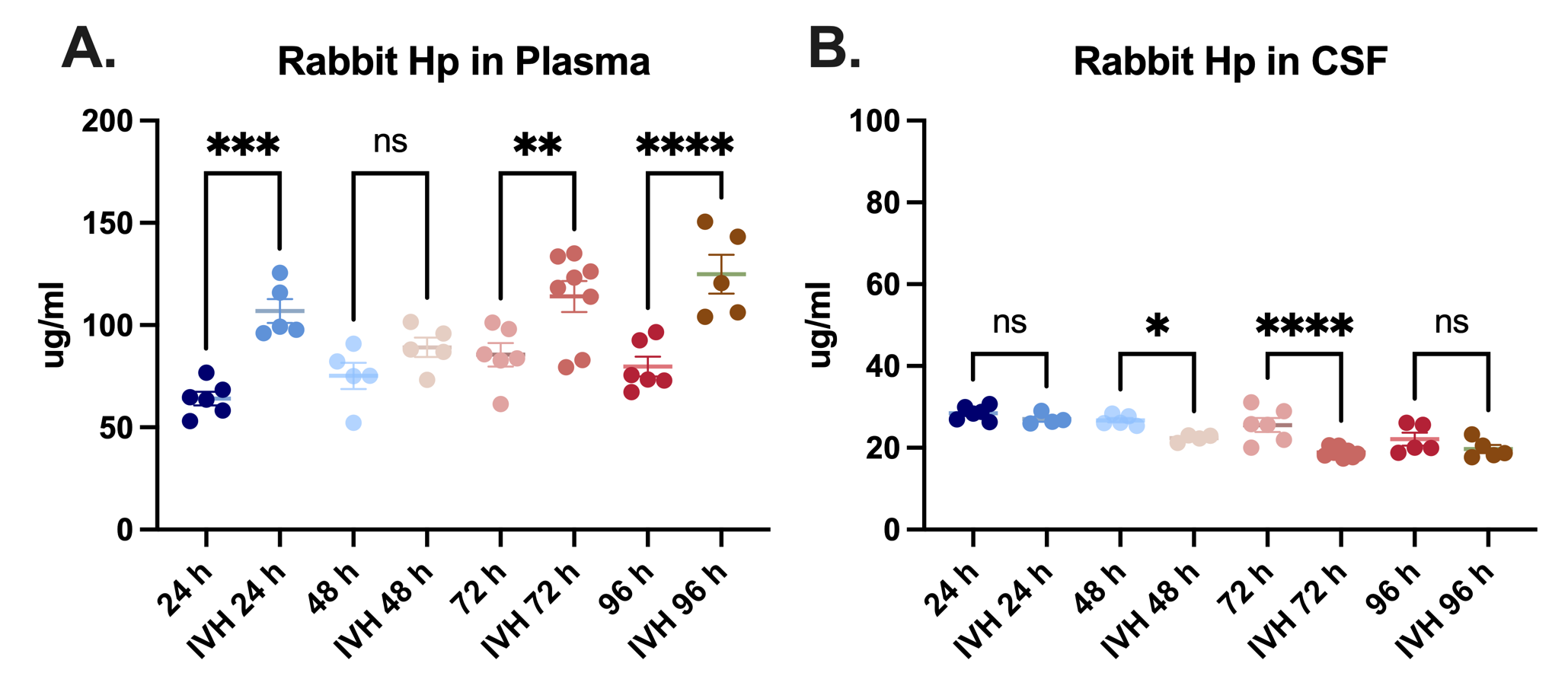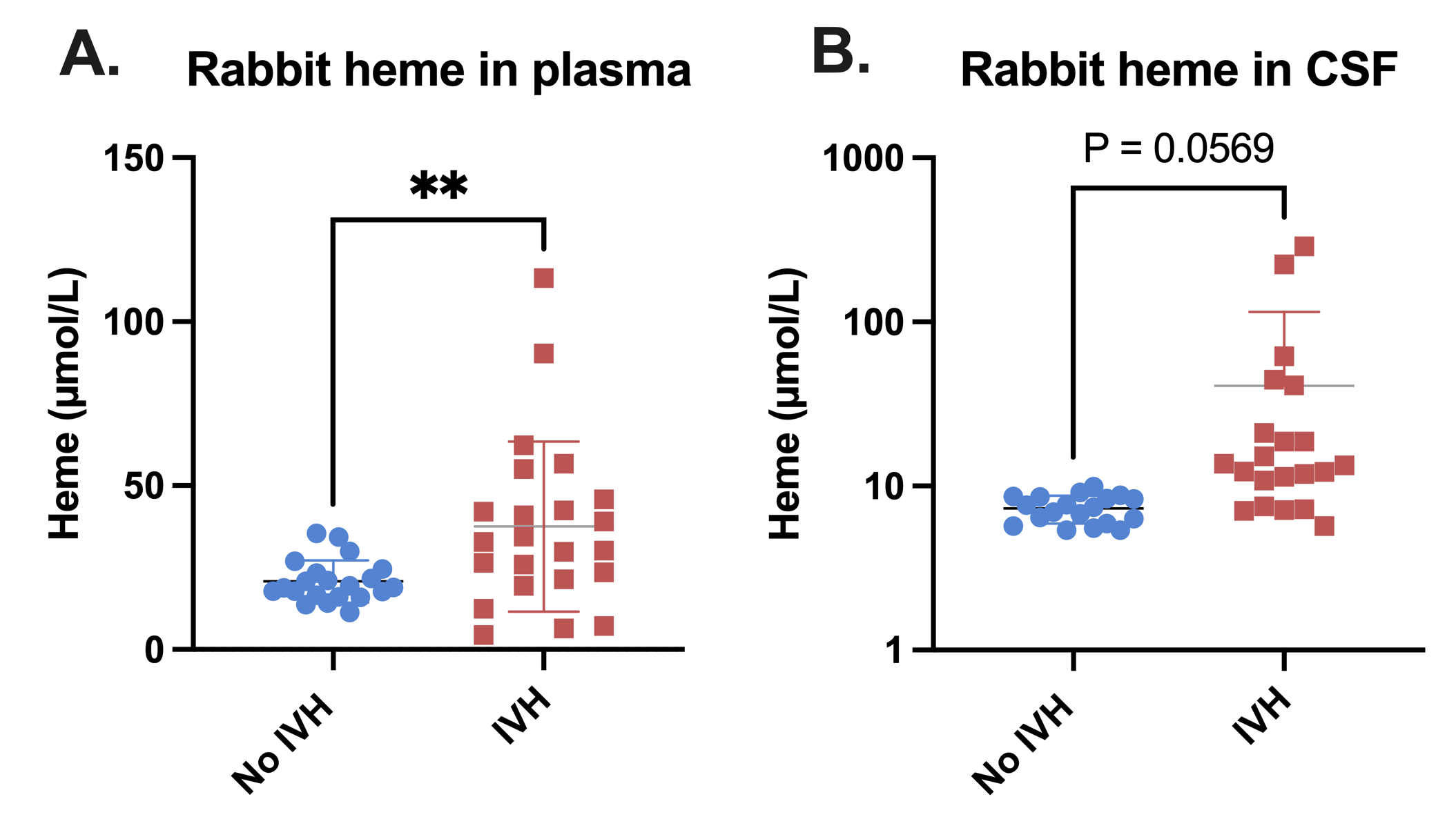Neonatology
Session: Neonatal Neurology 5: Clinical
544 - Endogenous haptoglobin and hemoglobin levels in preterm infants and preterm rabbit pups with intraventricular hemorrhage
Saturday, May 4, 2024
3:30 PM - 6:00 PM ET
Poster Number: 544
Publication Number: 544.1173
Publication Number: 544.1173

Magnus Gram, medk-mo0 (he/him/his)
Associate Professor
Dept. of Pediatrics, Lund University and Dept. of Neonatalogy, Skane University Hospital,
Lund, Skane Lan, Sweden
Presenting Author(s)
Background: Cerebral intraventricular hemorrhage (IVH) is a major cause of neurodevelopmental impairment in preterm infants. IVH is characterized by vessel rupture and a rapid accumulation of blood within the ventricles. Subsequent hemolysis leads to the release of extracellular hemoglobin into the cerebrospinal fluid (CSF). Hemoglobin and its metabolites initiate cytotoxic, oxidative, pro-inflammatory, and apoptotic pathways resulting in tissue damage. Scavenging of hemoglobin may constitute a potential treatment in IVH.
Objective: The aim was to investigate i) the scavenging capacity in the CSF of infants with IVH, and ii) the clinical translatability of the preterm rabbit pup model of IVH.
Design/Methods: Prospective observational study at a level III NICU, Skåne University Hospital, Lund, Sweden. 16 extremely preterm infants with a mean (SD) gestational age at birth of 27.2 (2.7) weeks and birthweight 1042 (369) g. All infants developed either IVH grade III (N=11) or periventricular hemorrhagic infarction (N=5). All infants received a neurosurgically inserted intraventricular reservoir enabling longitudinal CSF withdrawal.
Rabbit pups were delivered prematurely by cesarean section at embryonal day 29 (Term=31–32). IVH was induced. Plasma and CSF were collected at sacrifice from pups (24–96 hours).
Concentrations of cell-free hemoglobin/total heme and haptoglobin were determined in CSF (human and rabbit) and plasma (rabbit) samples.
Results: Intraventricular CSF concentration of cell-free hemoglobin (human) decreased during a 3-week period from a median (range) of 461 (1.5–511.3) µmol/L at time-point of insertion of reservoir to 0.4 (0.1–12.0) µmol/L (Figure 1). Concentrations of CSF haptoglobin (human) were extremely low and did not vary over time.
Comparing haptoglobin (rabbit) levels between IVH and non-IVH, pups with IVH displayed significantly higher haptoglobin levels in plasma, but lower in CSF (Figure 2). The total heme (rabbit) levels in plasma (37.50 vs 20.77 µmol/L, p=0.006) and CSF were increased in pups with IVH (40.75 vs 7.32 µmol/L, p=0.057) (Figure 3).
Conclusion(s): Intraventricular levels of cell-free hemoglobin decreased rapidly following cerebral IVH in preterm infants. Levels of haptoglobin in CSF were extremely low throughout the study indicating a severe deficit in endogenous hemoglobin protection resources. Results show that the rabbit pup model of IVH mimics aspects of IVH in preterm human infants. In conclusion, our data propose a role for hemoglobin scavengers as a treatment of IVH, and that the preterm rabbit pup model of IVH can be used to evaluate the therapeutic effect.



